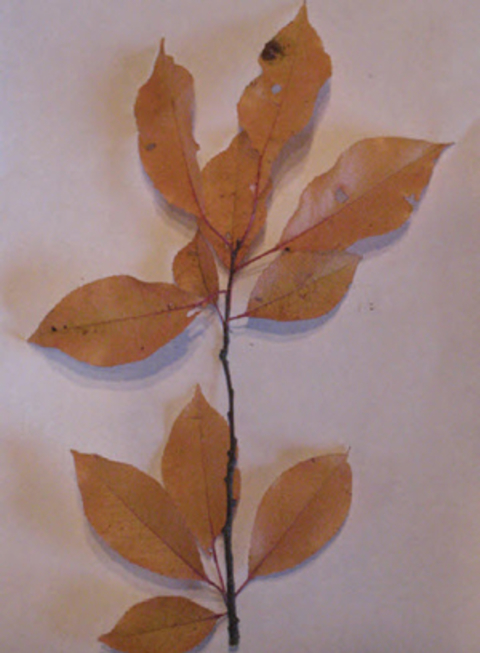Quick facts
-
Remove all chokecherries and other cherry species from horse pastures.
-
Chokecherry plants contain the toxin, cyanide, in their leaves and seeds.
-
Horses are commonly found dead after eating chokecherry.
-
Chokecherry fruit is safe for humans to eat.
Identifying
Chokecherry matures to a height of 6 to 10 feet. It has an irregular round top, often with a crooked or leaning trunk. Chokecherry leaves have teeth and are usually oval-shaped. The flowers bloom in June and the cherries ripen in August. Chokecherry is a perennial tall shrub or sometimes a small tree.
Chokecherry is found in Newfoundland to Saskatchewan and south to North Carolina and west to Kansas.
Chokecherry commonly grows on open sites with rich, moist soils such as:
-
Along fence rows
-
Along streams
-
On cleared land
-
Bordering wooded areas
Chokecherry is relatively less tolerant of shade.
Toxicity
The toxin, cyanide, makes chokecherry toxic to horses. Release of cyanide occurs when horses chew chokecherry seeds or forage or when the forage wilts (e.g. after a frost). Cyanide may be higher in young growing plants.
Plants of the cherry genus have varying levels of toxin in their leaves and seeds. The following have more toxin in their foliage.
-
Agucatillo
-
Cherry laurel
-
Black, wild or rum cherry
-
Chokecherry
Apricots and peaches tend to have more toxin present in their seeds.
Horses are often found dead within minutes to an hour after eating the plant. Rarely, terminal seizures are seen.
The opportunity for treatment is rare. A veterinarian may give sodium nitrite and thiosulfate to attempt to treat cyanide poisoning.
Control
You should remove all chokecherries and other cherry species from your horse pastures. Don’t plant cherry species in your horse pastures.
Other information
The fruit of chokecherry (and other cherry species) isn’t harmful to humans. Many use it for making jams, jellies, pies, sauces and wines.
Reviewed in 2021



